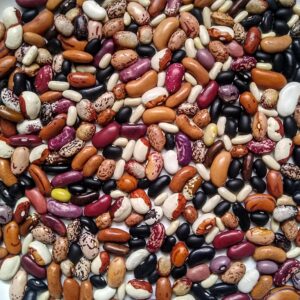
 The New York Times published a lengthy piece yesterday that explores the science on genetically engineered salmon and their containment, the lack of guidance by regulatory agencies, and how containment questions relate to crops and seed. Because the regulatory and environmental concerns echo many that OSA discusses in the context of GE crops and seed, we recently signed onto a letter supporting 40 Representatives and Senators calling on FDA to halt its approval of GE salmon.
The New York Times published a lengthy piece yesterday that explores the science on genetically engineered salmon and their containment, the lack of guidance by regulatory agencies, and how containment questions relate to crops and seed. Because the regulatory and environmental concerns echo many that OSA discusses in the context of GE crops and seed, we recently signed onto a letter supporting 40 Representatives and Senators calling on FDA to halt its approval of GE salmon.
The NYT article begins with the case of Roundup Ready creeping bentgrass, the containment of which has proven impossible. According to the article, Scott Seed Company (working in partnership with Monsanto to bring GE bentgrass to the market) asserts: “The grass would be cut by golf courses before it flowered…so there was no need to worry about pollen spread.” Sound like a familiar argument? It’s the same rebuttal Monsanto and Forage Genetics makes regarding containment of GE alfalfa.
Carol Mallory-Smith, the head of Oregon State’s weed science program who studied the GE bentgrass gene flow, makes a simple yet salient point at the heart of many GE debates, especially those involving organic: “If it’s too risky to have gene flow…it’s probably too risky to do.”
More snippets from the article after the jump.
The important example of Roundup Ready creeping bentgrass
Early this past decade, the Oregon Department of Agriculture conducted a field trial just north of the town of Madras, planting 400 acres of bentgrass engineered by the Scotts Co. to resist the popular weedkiller Roundup. Scotts hoped the bentgrass, if approved, would be a financial bonanza, allowing golf courses to douse their fairways with herbicide, mimicking what has become standard practice at farms growing Roundup Ready corn and soybean countrywide.
Problems quickly became apparent. Unlike domesticated crops, which farmers must reseed each year and carefully tend, the bentgrass could thrive and persist in the wild. Only one major planting occurred, in 2002; the fields were fumigated after a year. But over the next half decade, the grass spread far across the plateau, its pollen scattered in the breeze, said Carol Mallory-Smith, head of Oregon State University’s weed science program, who studied the migration.
While the grass is environmentally benign, it has proved impossible to eradicate.
“If we went out there right now,” Mallory-Smith said, “[it’s] still out there.”
This bioengineering surge is forcing regulators to encounter ecological challenges far knottier than in the past: how to avoid a repeat of the Oregon grass escape; how to judge, in the lab, the environmental risk posed by wild escapees and their genes; and, most fundamentally, how and whether to stop these plants and animals from pursuing nature’s ultimate imperative — reproduction — in the wild.
“These are wilder species that are difficult to study,” said Allison Snow, an ecologist at Ohio State University. The first generation of domesticated crops were hard enough, she said, but “it’s more challenging when you have long-lived trees and grasses, and when you have fish and algae. … As we get into more and more species with more and more traits, there are going to be many more challenges.”
“Bioconfinement” measures are not 100% effective
Dubbed “bioconfinement” by scientists, sterility technology exists in various states of maturity, depending on the species. It is most advanced, thanks to a biological quirk, in fish. But for most plants and animals, bioconfinement is at best in beta, and few proposed systems have faced peer-reviewed trial, said Albert Kausch, director of the University of Rhode Island’s Plant Biotechnology Laboratory.
“There are ways we could build in mechanisms to prevent and inhibit gene flow into the environment,” Kausch said. “How severe does it need to be? I don’t know. You could build in redundancies and fail-safes if necessary.”
Scientists have received little general guidance from regulatory agencies on what will be required for their wild creations. Until a few years ago, the U.S. Department of Agriculture tended to view all proposed plants in the same light, scientists say, and the agency still has not indicated whether it will require bioengineered trees or grasses to be sterile, and, if so, how strictly they define sterility.
“This is a challenge that has not been addressed,” Kausch said. If the government wants zero tolerance, imposing rules that no pollen can escape, “then draw that line in the sand and let the technology people develop what’s necessary,” he said.
In many ways, FDA and USDA are still improving their ability to evaluate environmental risks from next-generation biotech. FDA has quietly launched a pilot program to overhaul its animal biotech program, hiring new scientists for the task. And this year USDA reorganized its biotech division, creating a dedicated team to assess environmental risks, requesting $5.8 million for the upgrade.
But like plant biology, the techniques used to induce fish sterility are never 100 percent. Life is tricky, and often it finds a way to survive, said Tillmann Benfey, a fish biologist at the University of New Brunswick and one of the world’s leading experts on aquaculture controls.
“In biology, nothing is perfect, especially when trying to get around sexual maturation,” Benfey said. “It’s really what evolution is all about.”
“That’s the story in biology,” Benfey said. “Nothing is 100 percent.”
Benfey’s phrase is a familiar refrain. The inability for one system to ever promise full containment means that, if regulators have any hope of controlling wild bioengineered organisms, multiple systems will need to be in place, said Ohio State’s Snow, who was an author on the National Academy report.
“If you’re going to even come close, you’re going to have a lot of redundant mechanisms,” Snow said.
